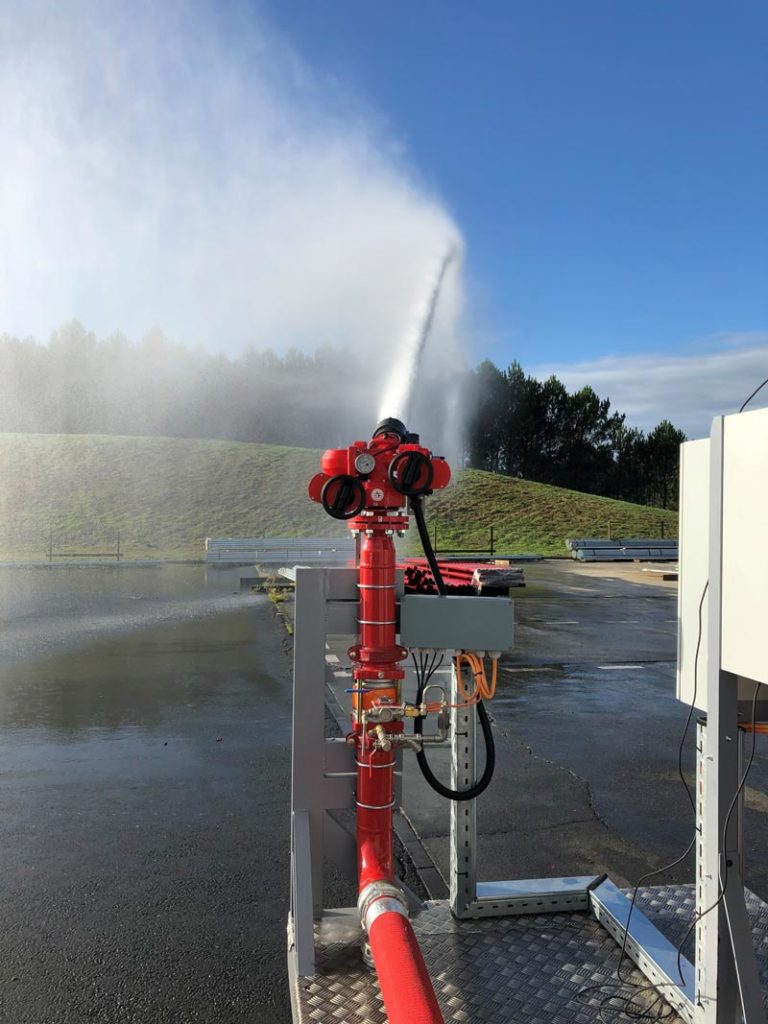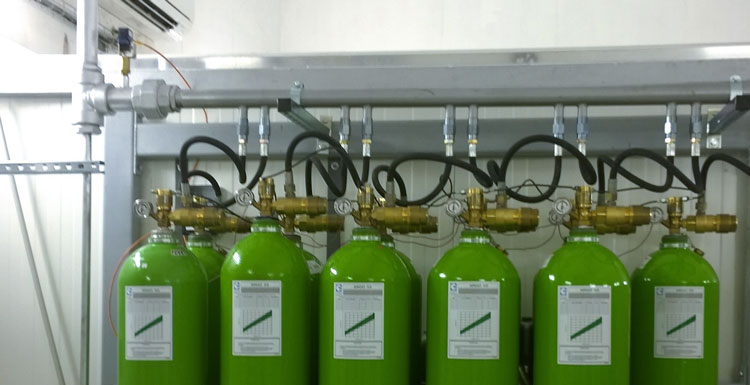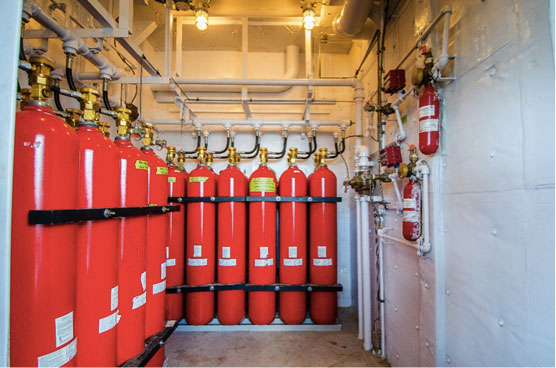Water mist
In water mist systems, the water used for suppressing fires is in the form of fine droplets. The extinguishing agent is not the actual water, but the mist which has different properties depending on how it is generated, its fineness and its kinetic energy. This extinguishing agent is not stored, but produced “in situ” at the nozzle.
Water mist action is based on several mechanisms which are often combined:
- cooling of the flames and combustible material
- recirculation of the combustion products
- attenuation of thermal radiation
- effect of oxygen depletion due to water atomisation, which can either be restricted to the flame area or generalised to the entire volume according to configurations (size and type of room, and ratio of power to size of fire, in particular).
Water mist is compatible with class A, B, C and F fires. It is particularly suitable for extinguishing high-energy fires (liquid fuel) in a relatively confined space (generator set, turbine room).
APSAD Technical Document D2 sets out three levels of effectiveness that can be adopted for the performance targets of water mist protection systems:
- extinguishment of the fire: complete, permanent elimination of any flame fire or any smouldering fire
- suppression of the fire: significant reduction of the heat release rate and prevention of re-ignition
- control of the fire: limitation of the development of the fire and prevention of structural damage (by cooling nearby objects and gases and/or by pre-wetting nearby combustible elements).


Fixed gas-type extinguishing systems
- inhibitor gases: HFC227ea, FK 5-1-12, HFC23
- inert gases: IG01, IG55, IG100, IG341
- carbon dioxide (CO2)
- staff safety
- fire resistance of the room’s walls
- gas tightness of the room which must be sufficient to maintain the required concentration for 10 minutes
- evacuation of excess pressure when the gas is released in the room
- interlocks (HVAC and power cutout)
- restoration following gas emission.
Fixed powder extinguishing systems
Powders are most often used in handheld fire extinguishers.
They can however be applied to fixed systems, particularly for protecting small areas (storage and handling of flammable liquids, etc.) at sites without a suitable water supply.


